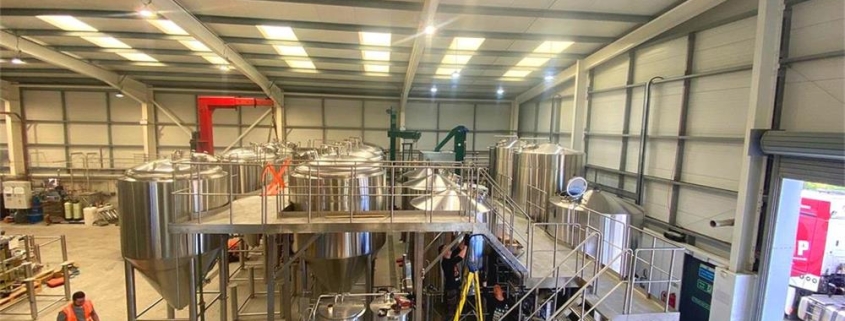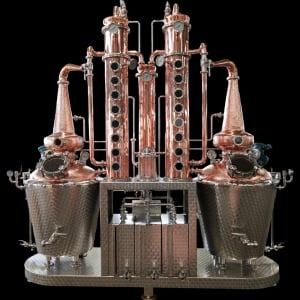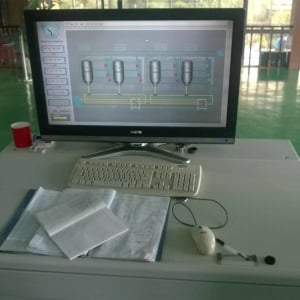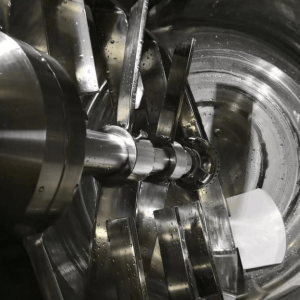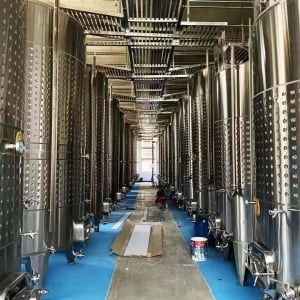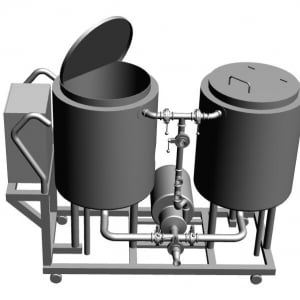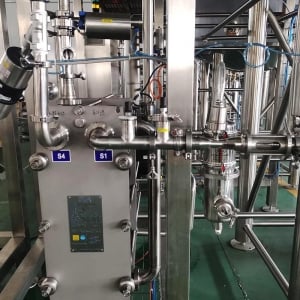Mini Brewery Equipment
Overview of Mini Brewery Equipment
In the world of brewing, the journey from raw ingredients to a frothy pint of beer is an intricate process requiring precision and quality equipment. For those stepping into the craft of brewing, whether for a small business or a personal hobby, understanding mini brewery equipment is crucial. This guide aims to provide a detailed, SEO-optimized breakdown of everything you need to know about mini brewery equipment, from the types available to the brewing process, and how to choose the best suppliers. Whether you’re a novice or a seasoned brewer, this article will walk you through every step with clarity and detail.
Understanding Mini Brewery Equipment
Mini brewery equipment is designed to facilitate small-scale brewing, typically producing beer in batches ranging from a few liters to several hundred liters. This type of equipment is ideal for craft brewers, small breweries, and enthusiasts who want to brew high-quality beer without the need for industrial-scale operations.
Equipment Guide
When it comes to setting up a mini brewery, having the right equipment is key to success. Below is an overview of the essential components needed:
- Mash Tun: This is where the mashing process occurs, where grains are mixed with water to convert starches into fermentable sugars.
- Brew Kettle: After mashing, the wort is boiled in the brew kettle, where hops are added for bitterness and aroma.
- Fermentation Tanks: These are used to ferment the wort into beer. Different sizes and materials can impact the flavor and quality of the beer.
- Cooling System: Efficient cooling is necessary to bring the temperature of the wort down after boiling, preparing it for fermentation.
- Cleaning and Sanitizing Equipment: Keeping your equipment clean and sanitized is crucial for producing high-quality beer without contamination.
- Control Systems: These systems help regulate temperature, pressure, and other brewing variables to ensure consistent quality.
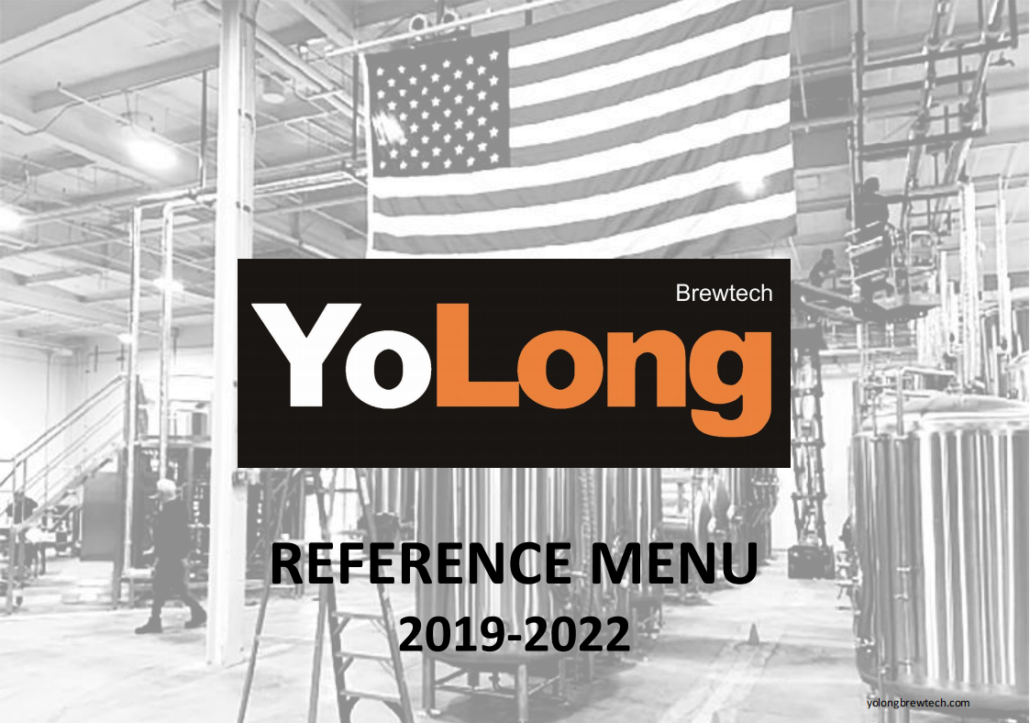
Types of Mini Brewery Equipment
Mini brewery equipment can vary greatly depending on the scale of production, the type of beer being brewed, and personal or commercial preferences. Below is a table that outlines the main types of equipment, along with their key features.
| Equipment Type | Description | Key Features |
|---|---|---|
| Mash Tun | Vessel for mashing grains and converting starches to sugars. | Insulated, various capacities, can include stirring mechanisms. |
| Brew Kettle | Used for boiling wort and adding hops. | Includes heating elements, may have whirlpool capabilities. |
| Fermentation Tank | Vessels where wort is fermented into beer. | Available in different materials (stainless steel, plastic), various sizes. |
| Cooling System | Equipment used to rapidly cool wort after boiling. | Plate chillers, immersion chillers, glycol systems. |
| Control Systems | Automated or manual systems to control brewing parameters. | Temperature sensors, pressure controllers, programmable. |
| Cleaning Equipment | Tools and chemicals for cleaning and sanitizing brewing equipment. | Spray balls, CIP (Clean-In-Place) systems, sanitizers. |
The Brewing Process with Mini Brewery Equipment
The brewing process is a step-by-step journey that transforms raw ingredients into the delicious beer we know and love. Here’s a breakdown of the process using mini brewery equipment:
1. Mashing
Mashing is the first step in brewing, where malted grains are mixed with hot water in the mash tun. This process activates enzymes that convert the starches in the grains into fermentable sugars. The mash tun’s design, including its insulation and stirring capabilities, plays a crucial role in ensuring an even and efficient mash.
2. Lautering
After mashing, the mixture is transferred to the lauter tun, where the solid grain husks are separated from the liquid wort. Lautering involves rinsing the grains with hot water to extract as much sugar as possible. This step requires precision to avoid extracting unwanted tannins from the grain husks, which can impart bitterness to the beer.
3. Boiling
The wort is then moved to the brew kettle, where it is boiled for a specified period, usually an hour. During boiling, hops are added at different stages to impart bitterness, flavor, and aroma to the beer. The boiling process also sterilizes the wort, ensuring no unwanted microorganisms are present. Brew kettles with whirlpool capabilities help in efficiently separating hop particles from the wort after boiling.
4. Cooling
Once boiling is complete, the wort needs to be rapidly cooled to a temperature suitable for fermentation. Cooling is typically done using a plate chiller or an immersion chiller, which quickly lowers the temperature of the wort while minimizing the risk of contamination. The cooling system’s efficiency is critical to maintaining the quality of the beer.
5. Fermentation
The cooled wort is then transferred to a fermentation tank, where yeast is added to begin the fermentation process. This stage can last from a few days to several weeks, depending on the type of beer being brewed. Temperature control during fermentation is essential, as different yeast strains require specific temperature ranges to produce desired flavors and aromas.
6. Conditioning
After fermentation, the beer is conditioned to allow flavors to mature and unwanted compounds to settle out. Conditioning can occur in the same fermentation tank or in a separate vessel. This stage is crucial for achieving the beer’s final taste and clarity.
7. Packaging
The final step in the brewing process is packaging the beer. Depending on your setup, beer can be kegged, bottled, or canned. Packaging equipment should be chosen based on the scale of production and the type of packaging desired.
Capacity, Space, Design, Layout, and Customization of Mini Brewery Equipment
When planning your mini brewery, it’s essential to consider how the equipment’s capacity, design, layout, and customization options align with your brewing goals. Below is a table that explores these aspects in detail.
| Aspect | Details | Considerations |
|---|---|---|
| Capacity | The volume of beer the equipment can produce per batch. | Choose capacity based on your production goals, e.g., hobby brewing vs. small commercial operations. |
| Space Requirements | The physical space needed to install and operate the equipment. | Ensure sufficient space for all equipment, including room for expansion if needed. |
| Design and Layout | How the equipment is arranged in the brewing space. | Optimize layout for workflow efficiency, including proximity of key equipment pieces. |
| Customization | Ability to modify equipment to suit specific brewing needs. | Consider options like additional ports, custom heating elements, or automation systems. |
Suppliers and Price Range for Mini Brewery Equipment
Choosing the right supplier is crucial for obtaining high-quality equipment that fits your budget and brewing needs. Below is a table that outlines some of the well-known suppliers in the mini brewery equipment industry, along with the typical price ranges for their products.
| Supplier | Equipment Offered | Price Range | Notable Features |
|---|---|---|---|
| A.B.E. Equipment | Complete brewery systems, fermentation tanks, brew kettles. | $10,000 – $100,000+ | Customizable systems, strong customer support. |
| Ss Brewtech | Brew kettles, fermenters, cooling systems. | $1,000 – $30,000 | High-quality stainless steel, advanced engineering. |
| Blichmann Engineering | Homebrew systems, commercial systems, accessories. | $500 – $50,000 | Innovative designs, modular systems. |
| Specific Mechanical Systems | Full-scale brewery equipment, pilot systems. | $20,000 – $200,000+ | Custom-built systems, premium materials. |
| BrauKon | Complete brewing systems, fermentation tanks, CIP systems. | $50,000 – $500,000+ | German engineering, turnkey solutions. |
Installation, Operation, and Maintenance of Mini Brewery Equipment
Operating a mini brewery involves more than just brewing; it also requires careful attention to installation, regular maintenance, and efficient operation. The table below provides insights into these aspects.
| Stage | Details | Considerations |
|---|---|---|
| Installation | Setting up the equipment in your brewing space. | Requires professional installation, adherence to local regulations, and careful planning of utilities. |
| Operation | Daily use of the equipment to brew beer. | Understand the equipment’s controls, monitor brewing variables, and maintain a clean brewing environment. |
| Maintenance | Regular upkeep to ensure equipment longevity and optimal performance. | Schedule routine cleanings, inspect for wear and tear, replace parts as needed, and calibrate control systems. |
How to Choose a Supplier for Mini Brewery Equipment
Choosing the right supplier is one of the most critical decisions you’ll make when setting up a mini brewery. The table below provides criteria to consider when selecting a supplier.
| Criteria | Explanation | Tips for Evaluation |
|---|---|---|
| Quality of Equipment | The durability, performance, and build quality of the equipment. | Look for suppliers with a strong reputation, positive reviews, and demonstrated expertise in brewing. |
| Customer Support | The level of assistance and service provided before, during, and after purchase. | Choose suppliers that offer comprehensive support, including installation, training, and after-sales service. |
| Customization Options | Ability to tailor equipment to your specific brewing needs. | Evaluate the flexibility of the supplier to modify designs or add features. |
| Price and Value | The cost of the equipment relative to its quality and features. | Compare prices across multiple suppliers and consider the long-term value, not just upfront costs. |
| Delivery and Installation | The logistics of getting the equipment to your location and setting it up. | Check the supplier’s delivery times, installation support, and any associated costs. |
Pros and Cons of Mini Brewery Equipment
Investing in mini brewery equipment comes with its own set of advantages and challenges. Below is a table that compares the pros and cons of this type of equipment.
| Pros | Cons |
|---|---|
| Affordability: Mini brewery equipment is generally more affordable than larger commercial systems, making it accessible for small businesses and hobbyists. | Limited Capacity: Mini systems have limited batch sizes, which may not be sufficient for larger production needs. |
| Scalability: Many mini brewery systems are modular, allowing for easy expansion as your brewing needs grow. | Space Requirements: While smaller than industrial setups, mini breweries still require significant space and proper layout planning. |
| Customization: Mini systems often offer more customization options, allowing brewers to tailor the setup to specific brewing styles. | Operational Complexity: Operating a mini brewery still requires significant knowledge and skill, especially for those new to brewing. |
| Flexibility: Ideal for experimenting with new recipes and small-batch production. | Maintenance: Regular maintenance is crucial, and improper care can lead to equipment failure and poor beer quality. |
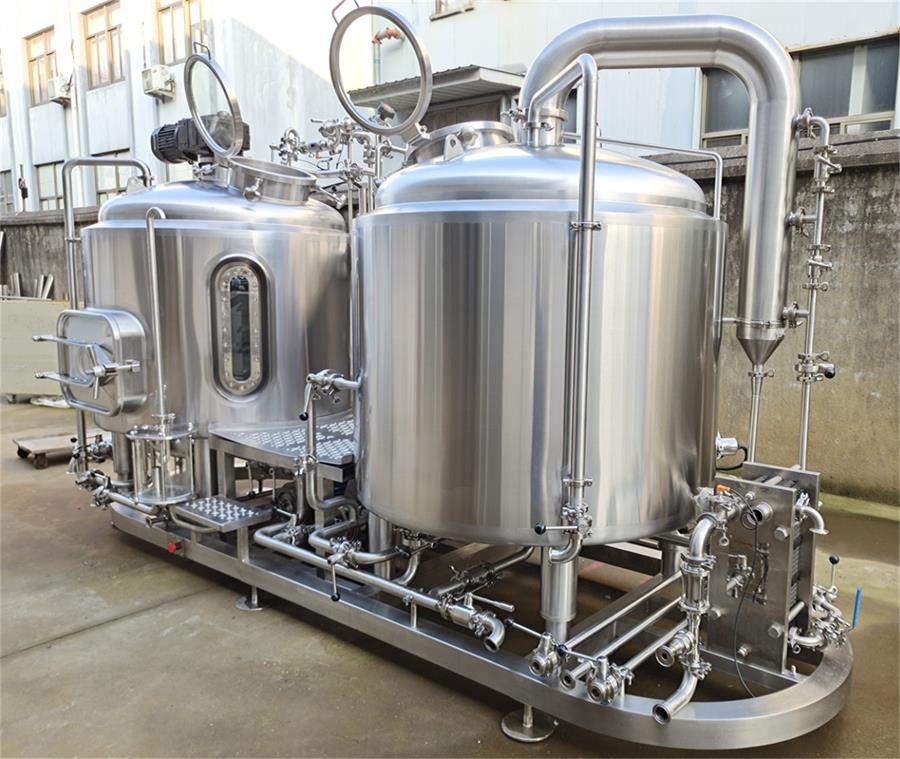
FAQ
In this section, we address some of the most frequently asked questions about mini brewery equipment, presented in a table format for easy reference.
| Question | Answer |
|---|---|
| What is the typical cost of mini brewery equipment? | The cost can vary widely depending on the equipment size, quality, and supplier, ranging from $1,000 to over $200,000. |
| How much space do I need for a mini brewery? | Space requirements vary, but a small-scale setup typically needs at least 100-200 square feet. |
| Can I customize my mini brewery equipment? | Yes, many suppliers offer customization options to suit specific brewing needs and preferences. |
| What maintenance is required for mini brewery equipment? | Regular cleaning, inspection, and calibration are necessary to maintain equipment performance and longevity. |
| How long does it take to install mini brewery equipment? | Installation can take anywhere from a few days to several weeks, depending on the complexity of the setup. |
Conclusion
Investing in mini brewery equipment is a significant step for any aspiring brewer, whether you’re starting a small business or pursuing a passion for craft beer. Understanding the different types of equipment, the brewing process, and how to select the right supplier can make all the difference in your brewing success. This guide has covered the essentials, from equipment types and suppliers to the intricacies of brewing, ensuring you’re well-prepared to embark on your brewing journey. Whether you’re looking to produce small batches of experimental brews or scaling up to meet commercial demand, the right mini brewery equipment will be your most valuable asset.

